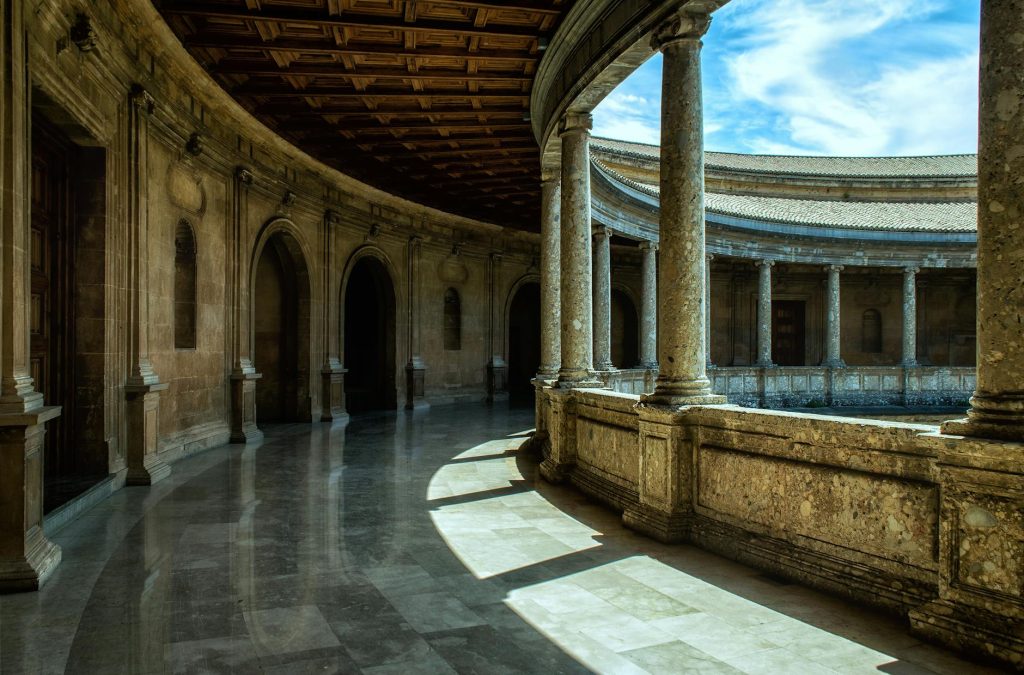
Alhambra Palace Granada: Andalusian Islamic Heritage
The Alhambra Palace in Granada stands as a magnificent testament to the Islamic heritage of Andalusia. A UNESCO World Heritage site, it encapsulates centuries of history, artistry, and architectural brilliance. Exploring the Alhambra provides not only a glimpse into the past but also an appreciation of the rich cultural tapestry that defines this part of Spain.
History of Al-Andalus
Al-Andalus refers to the territories in the Iberian Peninsula that were under Islamic rule from the 8th to the 15th century. This period marked a profound cultural and intellectual flourishing, allowing diverse cultures to coexist and evolve. The architectural achievements during this era reflect a blend of influences, synthesizing Islamic, Christian, and Jewish traditions.
Granada became a focal point of this heritage, especially under the reign of the Nasrid dynasty in the 13th century. The Alhambra, originally a modest fortress, grew into an opulent palace complex, showcasing the ingenuity and artistry of its builders. The Nasrids transformed the Alhambra into a royal residence, replete with stunning palaces and lush gardens that are still admired today.
Nasrid Palaces & Gardens
The Nasrid Palaces are a highlight of the Alhambra complex, comprising several distinct areas, each with unique features and architectural styles:
- Mexuar Hall: Initially a reception area, this hall is notable for its intricate wooden ceilings and Islamic calligraphy.
- Golden Room: Famous for its ornamental beauty, the room showcases wooden carvings and golden leaf accents that reflect the wealth of the Nasrid dynasty.
- Hall of the Ambassadors: The grandest of the Nasrid spaces, this hall was the seat of power and features a stunning dome that captures the intricate Islamic art that defines the Alhambra.
The gardens of the Alhambra, especially the Generalife, enhance the serene atmosphere of the palace. This summer palace features terraced gardens, fountains, and pathways that offer breathtaking views of the surrounding landscape. The combination of architecture and nature creates an enchanting environment that transports visitors to a different era.
Islamic Art & Geometry
One of the most striking features of the Alhambra is its Islamic art, particularly the geometric patterns and ornamentation that adorn its walls. These designs represent a hallmark of Islamic aesthetics, emphasizing the infinite nature of creation while adhering to a strict framework of mathematics and symmetry.
- Azulejos (tiles): Colorful ceramic tiles cover the surfaces, often arranged in complex geometric patterns that invite contemplation.
- Calligraphy: Inscriptions in Arabic grace many walls, featuring poetry and religious texts that convey profound meanings.
- Muqarnas: Intricate stucco work, known as muqarnas, creates three-dimensional ornamentation that gives an illusion of depth and complexity.
These artistic elements not only serve decorative purposes but also reflect the philosophical and spiritual beliefs of the time, creating an immersive experience for visitors.
Practical Visiting Tips
If you’re planning a visit to the Alhambra, here are some practical tips to enhance your experience:
- Book Tickets in Advance: Due to its popularity, especially during peak tourism seasons, it’s highly recommended to purchase tickets online in advance.
- Plan for Guided Tours: Consider joining a guided tour for deeper insights into the history and significance of the various sites within the Alhambra.
- Wear Comfortable Shoes: The complex covers a large area, with many steps and uneven paths, making comfortable footwear essential.
- Check Opening Hours: Depending on the time of year, the opening hours may vary, so make sure to verify before your visit.
Nearby Halal Food & Souvenirs
Exploring the Alhambra can work up an appetite, and Granada offers a variety of halal food options. Here are a few nearby recommendations:
- Café 4 Gatos: Located near the Alhambra, this café serves Mediterranean dishes and is known for its charming ambiance.
- Tetería La Bilbaina: A traditional tearoom that specializes in Moroccan cuisine, offering a wide selection of teas and pastries.
- El Aljibe: A popular restaurant that serves authentic local dishes and ensures that halal options are available.
As for souvenirs, consider purchasing handmade ceramics, textiles, or artisan crafts that reflect the richness of Andalusian culture. These items not only serve as mementos but also support local artisans.
Conclusion
The Alhambra Palace in Granada is more than just a historical monument; it is a celebration of Andalusian Islamic heritage that continues to captivate visitors from around the world. From its rich history to its stunning architecture and art, the Alhambra offers a unique journey into a vibrant past. By planning your visit carefully and embracing the local culture, you can make the most of your time in this extraordinary site.
References
Get epic product battles straight to you! 🥊 📦 ![]()
